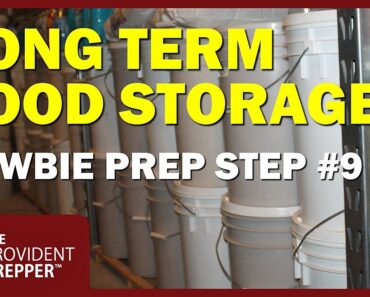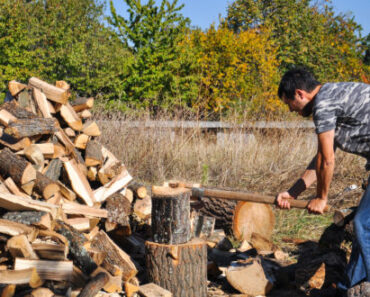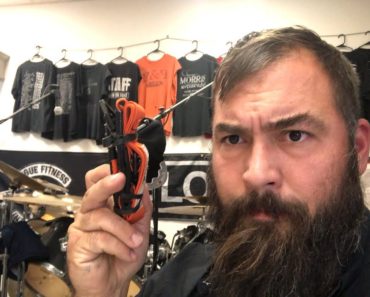In our modern world, we’ve become increasingly reliant on the conveniences provided by the grid – the intricate network of electricity, water, and communication systems that keep our society humming.
From the moment we wake up to the time we lay our heads to rest, we are immersed in a world of interconnected infrastructure that powers our homes, fuels our vehicles, and connects us to the digital realm. But what happens when this complex web of dependency unravels and the grid falters or fails altogether?
For preppers, this isn’t merely a hypothetical scenario; it’s a thought-provoking and, to some, a deeply unsettling question. We are often dismissed as doomsday preppers or conspiracy theorists, but we are united by a belief in the importance of self-reliance and the preparedness to face a world where the grid may no longer be a reliable safety net.
We often argue with those living in a comfort bubble that understanding how to survive without the grid isn’t an act of paranoia but a prudent acknowledgment of the vulnerabilities in our interconnected society.
The grid can go down at any time
The grid, comprising various critical infrastructure systems, can indeed go down at any time due to a range of factors, including natural disasters. Here are a few examples of how the grid can fail, with some of the most frequent natural disasters that contribute to these failures:
Hurricanes and Typhoons: Tropical storms, hurricanes, and typhoons can wreak havoc on power grids. Strong winds can knock down power lines and damage substations, leading to widespread power outages. Flooding associated with these storms can also disrupt power generation facilities and distribution networks.
Wildfires: In regions prone to wildfires, such as California, power lines and electrical equipment can be compromised by flames and heat. As a result, utilities may proactively shut off power to prevent sparking new fires, causing planned blackouts.
Tornadoes: Like hurricanes, tornadoes can cause significant damage to power infrastructure. Tornadoes can destroy power lines, substations, and power poles, resulting in localized or widespread power outages.
Floods: Flooding from heavy rainfall, river overflow, or storm surges can inundate power plants, substations, and electrical vaults, causing electrical failures. This is especially common in low-lying areas and regions near water bodies.
Winter Storms and Ice Storms: Snow and ice accumulation on power lines and equipment can lead to their failure. Additionally, falling trees and branches laden with ice can damage power lines, leading to extensive winter power outages.
Extreme Heatwaves: Prolonged periods of extreme heat can strain power grids as air conditioning systems and cooling equipment run at full capacity, leading to potential overloads and brownouts or blackouts.
Solar Storms (Geomagnetic Storms): Solar storms, caused by eruptions on the sun’s surface, can induce geomagnetic disturbances on Earth. These disturbances can disrupt power distribution and communication systems, potentially causing long-lasting power outages.
Cyberattacks: While not a natural disaster, cyberattacks on critical infrastructure can lead to grid failures. Hackers can target power generation and distribution systems, causing disruptions and even shutting down parts of the grid.
Human Error and Equipment Failures: Sometimes, the grid can fail due to human error, equipment failures, or inadequate maintenance, rather than natural disasters. These incidents can occur at any time and can lead to localized or widespread power outages.
These examples illustrate how a wide range of events, both natural and human-induced, can potentially disrupt the grid. It’s crucial for individuals, communities, and governments to be prepared for these contingencies, as reliance on the grid is a fundamental aspect of modern life, and its temporary absence can have significant implications for daily living and safety.
Can your family survive without the grid?
In an era defined by our dependence on the grid, the question of whether your family can survive without it is a compelling and thought-provoking one.
When we ponder this scenario, we are essentially considering our resilience in the face of adversity, and whether we possess the skills and resources necessary to safeguard our loved ones when the comforts of modern infrastructure are no longer guaranteed.
It’s a question that beckons us to evaluate our self-sufficiency, preparedness, and the extent to which we are reliant on external systems for our most basic needs. Yet, you don’t have to be an expert survivalist in order to survive in the absence of the modern commodities the grid provides. In fact, every survival plan should start with a self-assessment, and only after you have identified the strengths and weaknesses of your family can you build on those, regardless if your survival scenario involves the grid or not.
The problem with emergency preparedness is that way too many folks rush into it without making a plan or without trying to figure out if their way of doing things is the right one. I did a lot of consulting for people eager to prep, and the most visible error that most people made was to confuse prepping with hoarding. Folks buy a lot of stuff, spending their hard-earned money, and when their homes are filled with supplies and their budget is depleted, they falsely assume that they are ready for whatever the future may throw at them.
Instead of telling people what they need to buy and what they should be doing, I decided it’s much easier to help them to figure out things by themselves. Let’s look at how one’s life would be affected when the grid goes out and what are the needs he or she may need to fulfill.
Basic stuff like food and water
One of the first things people do when they start to learn about emergency preparedness is to go to the local grocery store and buy some food and water to fill their pantries. Unfortunately, this is not the best approach, and although I agree that having food and water supplies to survive for at least six months is a smart idea, I do believe things should be carefully planned.
First of all, do you know how much food your family eats per day or per week? And if so, are you sure that their nutritional requirements are fulfilled? There is a difference between filling your belly to ease hunger and eating the right foods in proper quantities to fulfill the caloric needs of your body. Not to mention that each of us have different caloric needs based on key factors such as age, gender, activity, and environment.
If you calculate the same amount of food you are used to eating for your children, you will only have a surplus of food that takes up space. This can become a problem if you are working with a limited budget and also if you don’t have enough storage space.
I believe that establishing the caloric needs of each family member should be the first step when it comes to purchasing and storing food. The second step should be to make a meal plan using the stuff you bought and testing it with your family for a week or two.
Now, when it comes to water, the main thing you have to consider is hydration. And here, the situation can be tricky as well because there is a difference between hydration and survival hydration. The first refers to the amount of water a person needs in order for their body to work in optimal condition, and the second covers the minimum amount of water for the human body to still function in adverse conditions.
Also, just because your family consumes various liquids like soda, natural juices, coffee, and whatnot, that doesn’t mean a good level of hydration is achieved. In fact, some of the liquids you drink on a daily basis are most likely to get you dehydrated, and this is a known case for soda and coffee. The U.S. National Academies of Sciences, Engineering, and Medicine determined that a man needs about 16 cups of water per day (about 1 gallon) to function properly, while a woman needs about 12 cups of water (about 0.7 gallons) for the same reason.
And these are just the water needs for drinking, and there is still the aspect of sanitation that needs to be considered. And how much water your family needs for mandatory tasks such as bathing, doing dishes, and laundry should also be taken into account. As mentioned before, the needs of each household are different.
Now when the grid goes down and the water pumps stop, you will need to figure out if you have stored enough water to cover your drinking and sanitation needs for the expected period of downtime. If not, you have to figure out now how you will procure your water, and this is a task that some folks can handle easily while others (especially those living in hot climates) will have to struggle for each drop of water they can obtain.
There is enough information available on Survivopedia and my website on how to acquire water, so I won’t cover this topic now.
Your shelter needs are mostly covered
The need for shelter is basically covered in the absence of a working grid since pretty much all of us have a place we call home. Now regardless if you own your home or you are renting, two things will become major concerns when the grid goes down. More precisely, how you will heat and cool your home. Without electricity, this can become a real problem, especially if the grid goes down during a heat wave or during a blizzard.
There are two things you can do in such a case, regardless if you want to cool or warm your home. The first thing you can do is to figure out ways to produce your own electricity, and this can be as simple as acquiring a generator and storing enough fuel to keep it working for a while. In case you go with this option, my advice would be to consider a portable generator since you will be able to bring it along in case you are forced to evacuate.
The second thing you can do is install various systems that can help you produce your own electricity. The most obvious and popular one is the solar panels system. This can be a costly option, and regardless if you go for solar, wind, or hydropower, it may be a project you probably can’t tackle alone. However, being able to produce your own electricity will bring you closer to achieving complete independence and becoming self-sufficient.
One thing to mention is to plan for backups in case the system you chose for your home is rendered ineffective by the same event that brought the power grid down. In such case, the first option I’ve mentioned should also be considered besides your solar, wind, or hydro system.
Communication
For some, this aspect of survival is an important one, while for others is just a minor inconvenience. Some folks need to stay in touch with their loved ones, while others will want to be informed and figure out how long the grid will be down.
Having a HAM radio or a satellite phone is the way to go, and the second option is the most accessible (but not the most affordable) since it doesn’t require a somehow complex learning curve as the HAM radio. This topic alone was the subject of books, and there are many things to consider when planning for means of communication when the grid goes down. But as I said, some folks won’t be bothered by this, and they will wait for all of it to pass while getting informed by local authorities and even their neighbors.
In my case, I own a satellite phone, and the main reason I bought it was to keep in touch with my parents and in-laws in case something occurs. Also, I have friends and family outside the country, and they will try to get in touch when the brown stuff hits the fan. It’s stored in a Faraday bag with a laptop, a tablet, and two burner phones.
Medical needs
Unfortunately, we are a sick nation, and we get sicker with each passing year. Medical facilities are swarmed when a natural disaster occurs that affects large communities, and we’ve all seen how the health system can collapse during a large-scale event like the COVID pandemic.
When I first started my prepping journey, healthcare was one of my main concerns, and I had to figure out how vulnerable my family was. The first thing I did was to make sure I had various medical kits for each member of my family and make sure those kits covered all our most pressing needs. The second thing I did was to enroll all of us in first-aid classes and make sure that we knew how to help each other in case a medical emergency occurred.
Luckily, my family members don’t need specific medication, and I hope we will be fine when the grid goes down, and medical assistance is not available. I figured out ways to cover our medical needs using over-the-counter medicine but also natural alternatives.
If someone in your family needs specific medication for one or more illnesses, you must make an effort and make sure those needs are covered when the proverbial brown stuff hits the fan. Some medication, such as insulin, needs to be refrigerated, so as said previously, you should make sure you are able to produce your own electricity to keep the fridge or a small cooler running.
Some people may require assistance and transportation to medical facilities that are still working. In such case, you must have a gas cache ready to be used when the pumps at the local gas station run dry. Besides fuel, you also need to make sure your bug-out vehicle (since you will be forced to bug out in this case, even though it may be temporary) is well-maintained and ready to cover the miles to the nearest working medical facility.
Concluding
When the grid goes down and the electricity stops flowing, some folks will have to deal with minor inconveniences like figuring out how to pass the time, while others will have to guard their homes and join a neighborhood militia to keep their living area safe. For some entertainment and physical activities will be primary needs while for others self-defense and home protection will become their main concern.
Each family will have to deal with various inconveniences, and some will have it easy while others will go to extremes to survive when the grid goes down. The main thing to take away from this article is that there are certain areas you should make sure are covered when the blood of our modern society, electricity, stops flowing. Neither I nor anyone else out there can tell you precisely what you should be doing when that happens.
However, I can tell you that you need to be prepared to survive such an event, regardless if it lasts for one week or one month. Each and every one of us has different needs, and we have various problems we need to deal with when we are pulled out of our comfort zone.
What makes your problems so much bigger than everybody else’s? They’re yours, so you should be prepared to deal with them when the time comes.




























